
Fed Governor Jay Powell’s recent speech at Jackson Hole has catalysed increased risk aversion towards the investment outlook.
While global equities had already eased back from their recent rally, Powell’s resolutely hawkish tone prompted a fresh and more dramatic equity selloff. The S&P 500 is off 5.8% since Jackson Hole (8% since its 16 August peak), and Australian equities have fallen 3.6%. The impact on bond yields has been more moderate, with US 2-year and 10-year bond yields both moving up around 10 basis points (bps).
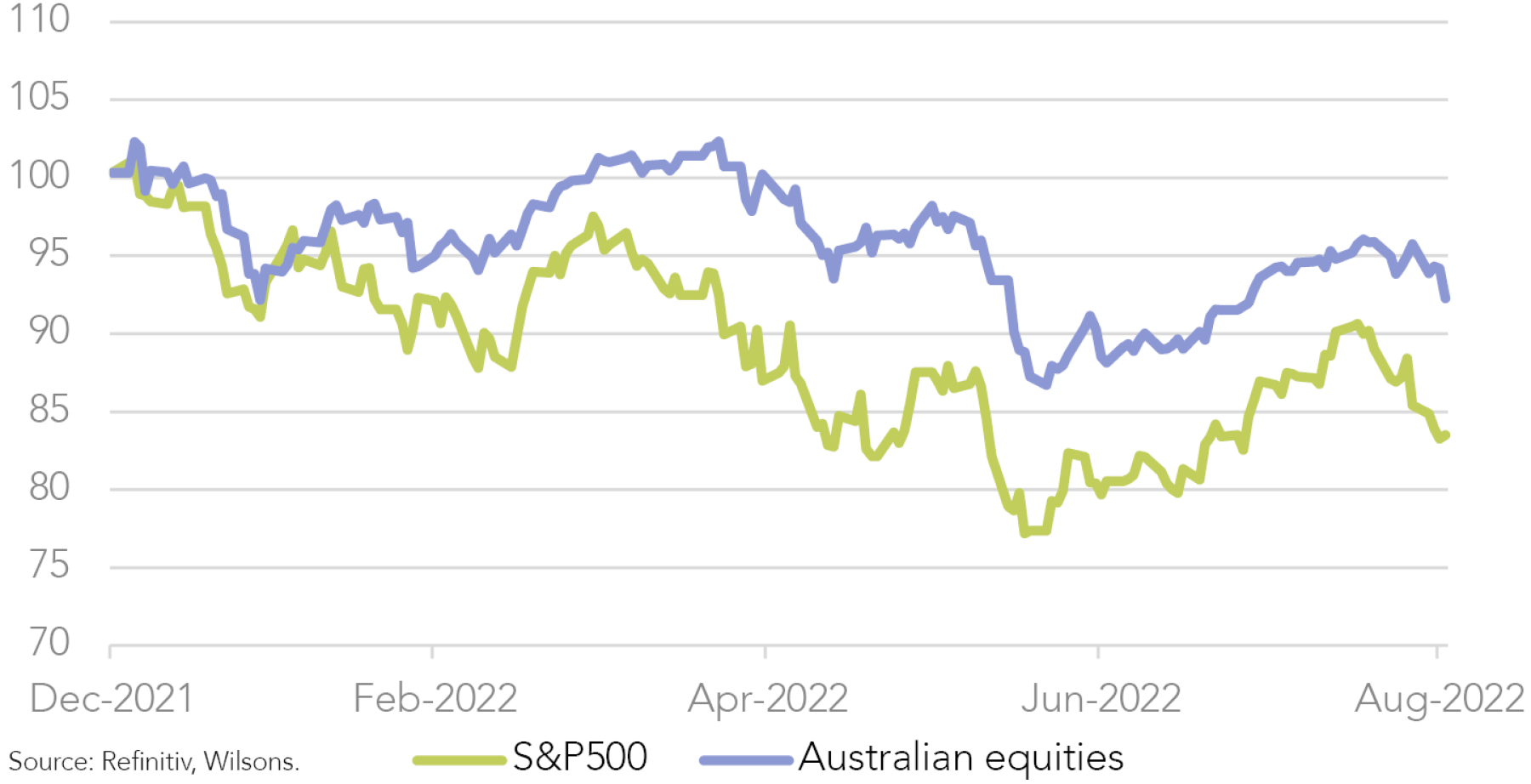
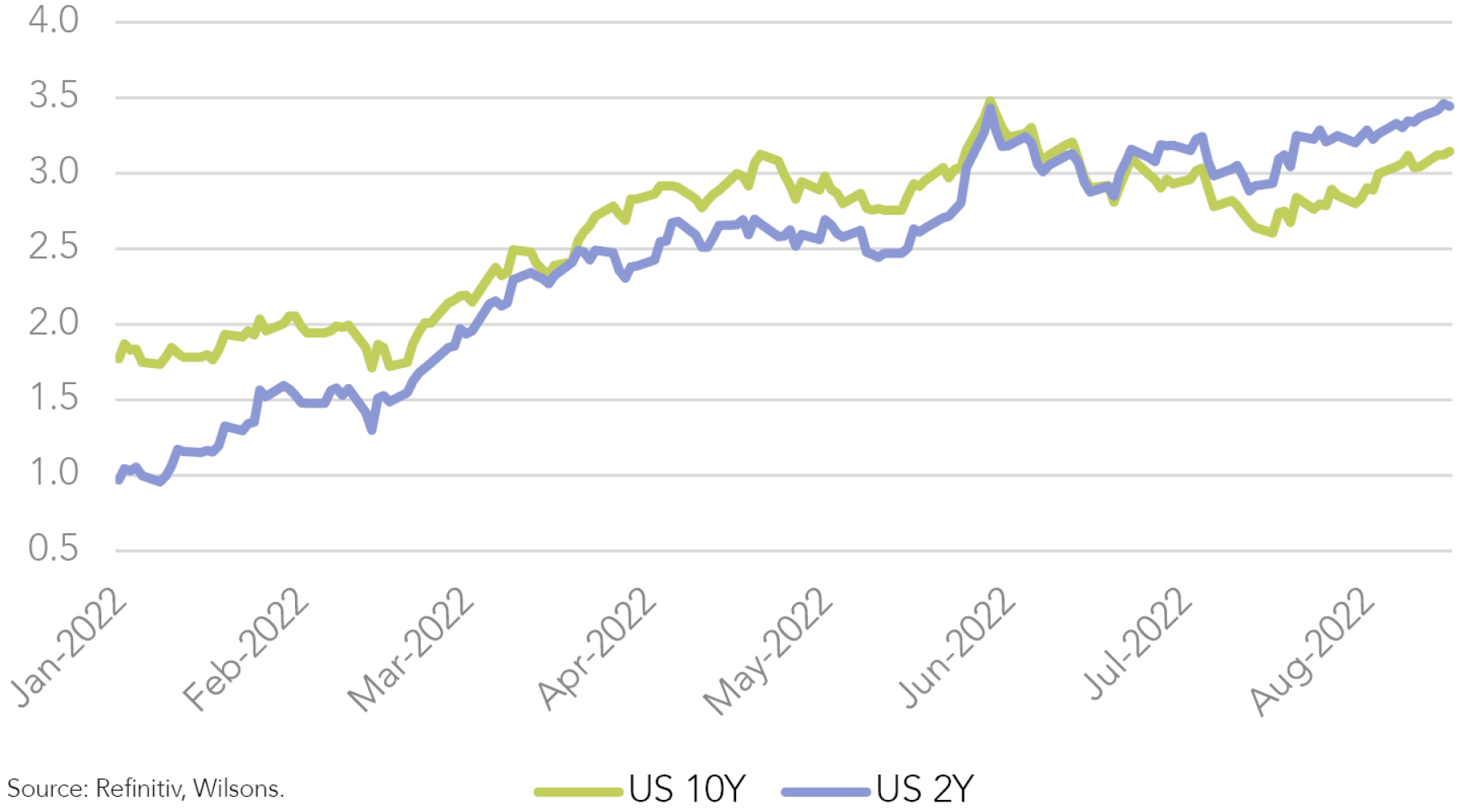
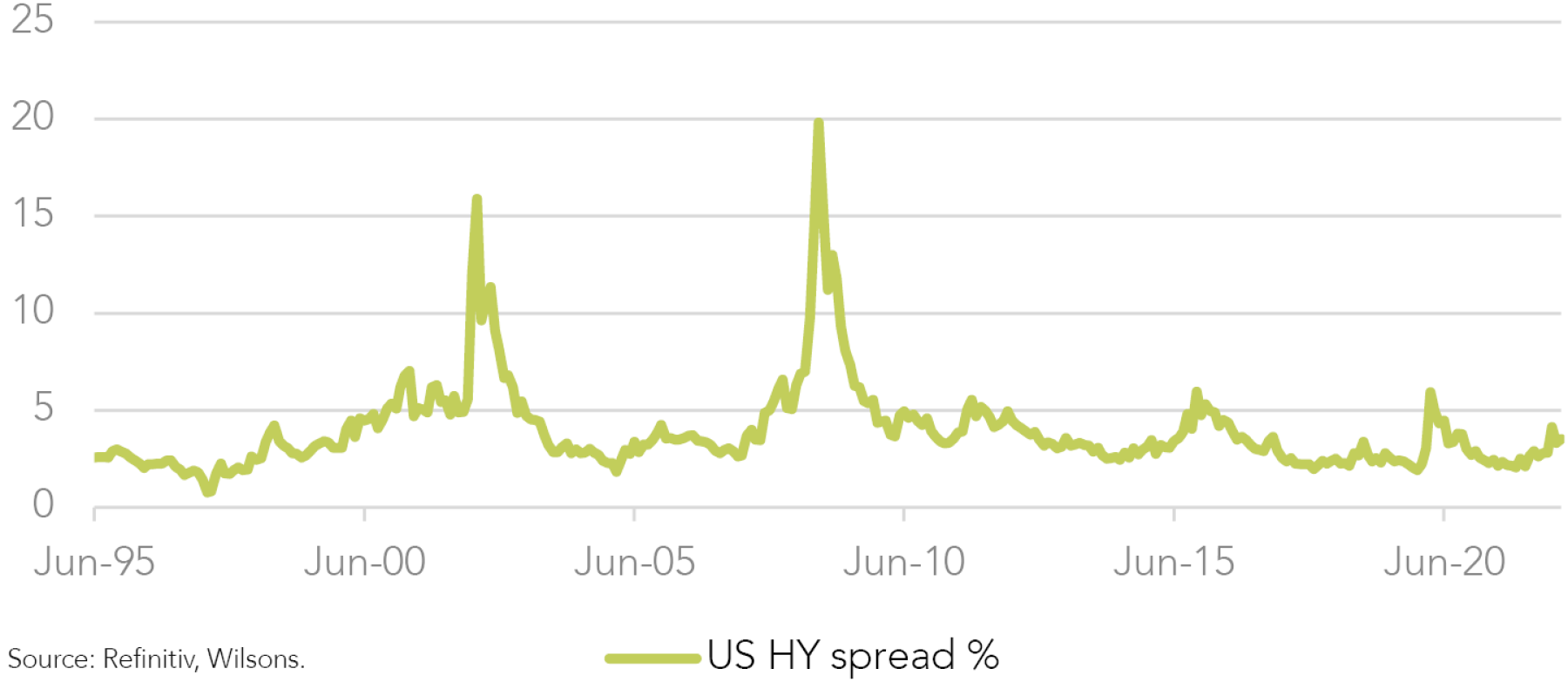
Fed Fund Futures have shifted the probability for a 75bps tightening in late-September to just over 70%, up from around 40% pre-speech. Nonetheless, the market continues to price some policy easing in the second half of 2023.
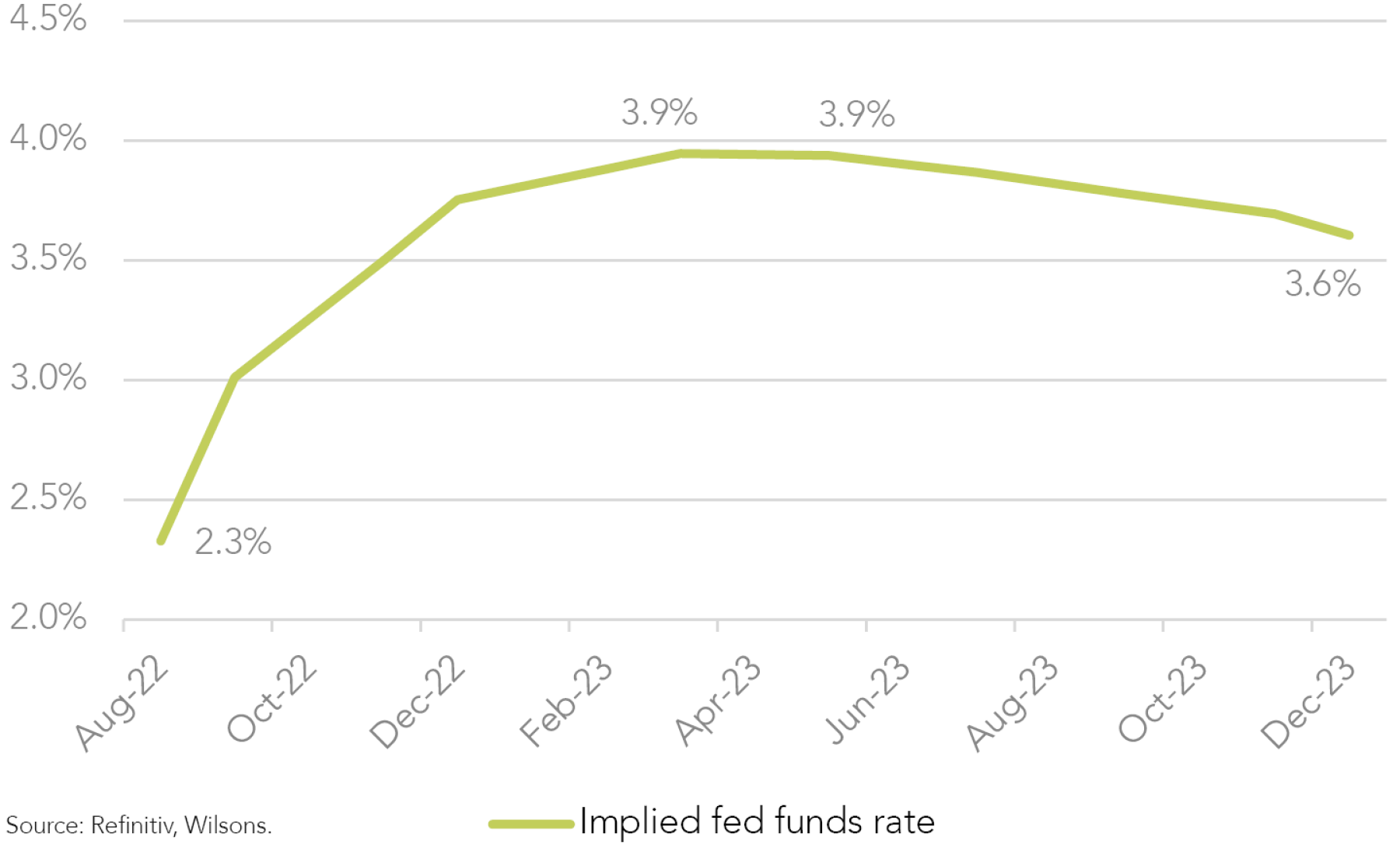
It appears the equity market fears the Fed will cause a recession, whether deliberately or accidentally, in its resolve to tame inflation. While parallels have been drawn to former Fed Governor Paul Volker’s inflation crusade in the early 1980s, we do not believe we face a 1970s/80s-style inflation backdrop. The pandemic is the primary culprit for the surge in US inflation, although excess demand (buoyed by overly stimulatory fiscal and monetary policy) has made its own contribution. We expect US inflation has already begun a steady descent from its multi-decade highs, though there is still plenty of uncertainty regarding just how fast inflation comes down and where it settles. So, a Fed-induced recession is not a fait accompli but remains a significant risk.
While Fed chair Powell has emphasized his resolve to quell inflation, he also re-emphasized the Fed’s “data dependence”. If inflation continues to ease and growth continues to cool, his tone (and actions) will soften despite current hawkishness.
Plenty to Watch in September
While our approach is to take a medium- to long-term view of investment markets, the long road seems to be paved with a series of short-term tests, and, in this respect, the next few weeks could well set the tone for the balance of the year. At time of writing, the market is awaiting the US August payrolls (employment and wages), which are due to be released on Friday night (2 September).
The US labour market is in a very unusual position for an economy that many think is on the cusp of a recession. Last month’s release showed a massive 528,000 jobs were added in July. This was well above both consensus and the longer-term “trend” pace of job creation. While this put to bed the notion that the US was already in recession, it did raise the prospect of the labour market remaining too tight, with the risk that a tight job market could fuel inflation via persistently high wage-growth outcomes. The market expects a cooler but still very warm 300,000 increase in jobs on Friday night, and robust average hourly earnings growth of 5.2%. A higher-than-expected employment and/or wage-growth outcome would likely cause further market angst in terms of intensifying Fed hawkishness. Conversely, a labour market reading that is moderately below consensus would ease market fears a little.

Even more importantly, the market is awaiting the August US consumer price index (CPI) on 13 September. The consensus expects a comparatively benign result with inflation easing back to 8.3%, following last month’s 8.5% and the previous month’s peak reading of 9.1%. Last month was encouraging, with a lower-than-expected month-on-month headline inflation read of 0%. Much like last month, we see some downside risk to consensus with potential for either a zero or slightly negative month-on-month change, as previous big inflation contributors such as gasoline prices begin to contribute to “deflation”.

A lower-than-consensus result could be a bullish support for a jittery equity market coming into the Fed meeting on 21 September. The market could start coming to terms with the prospect of a steady and significant decline in inflation over the next year, calming fears around Fed tightening.
Given the build-up of bearish positioning, this could well reverse the recent bearish equity market performance trend. However, we are reluctant to put too much faith in a single data release given the inherent volatility of monthly releases.
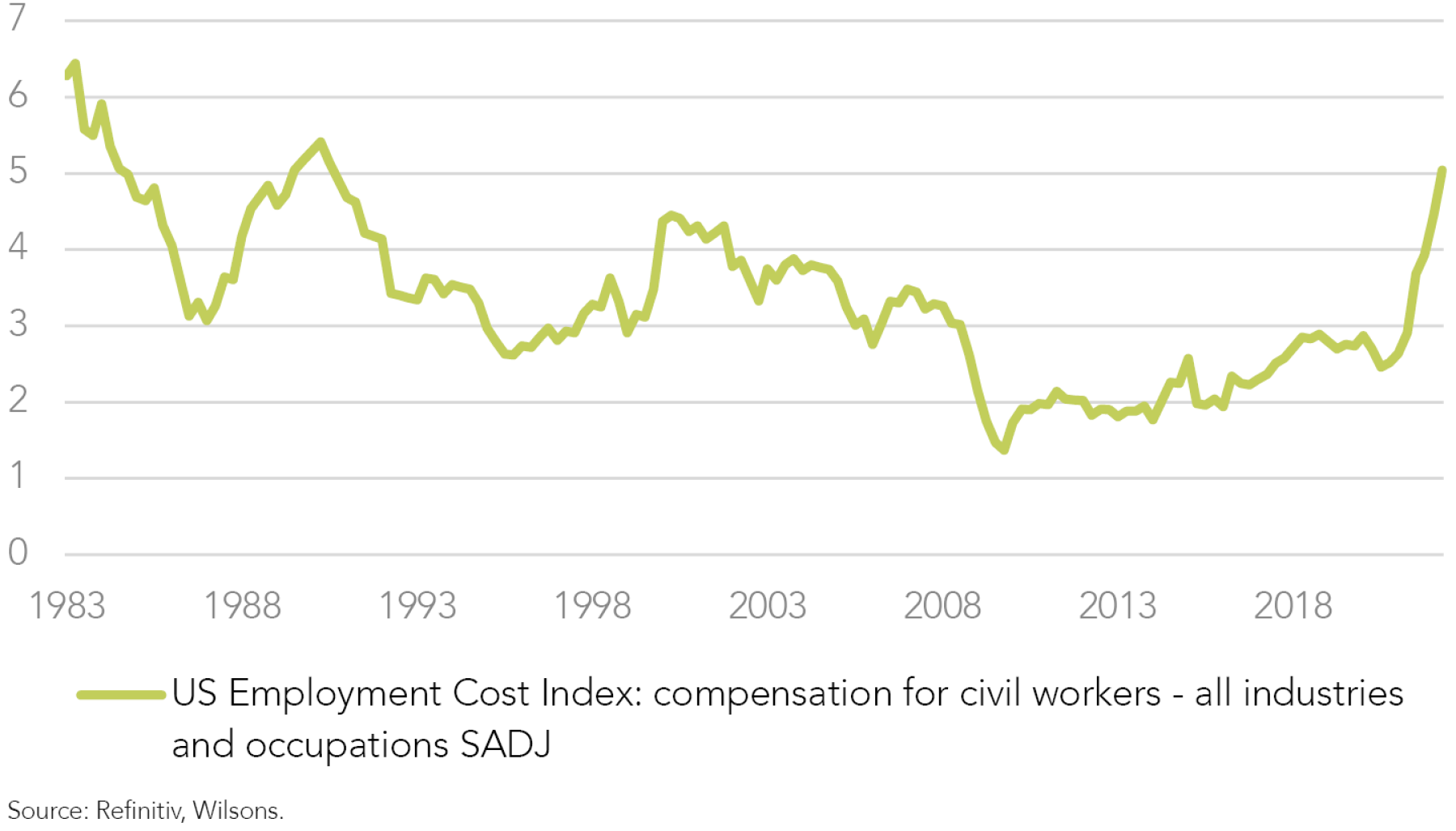
What is a Fed Pivot Exactly?
A key point that Fed chair Powell made at Jackson Hole is that the Fed is a long way from cutting rates. This is fair enough, though the market is not really expecting a cut until the second half of 2023 (based on the futures curve, figure 4). This is a long time in central banker terms. We should remind ourselves of how the Fed’s current rhetoric compares to what it was saying 12 months ago, when “transitory inflation” and policy patience were being emphasized.
Even if the Fed chooses to emphasize its hawkish credentials with another 75bp hike this month, a step down from 75bp hikes to 50bp (November) and then 25bp (December), followed by an extended pause, would be seen as a “progressive pivot” in our view. This would be particularly valid if the market’s view of mid-2023 cuts remains in place. Steadily slowing inflation would support the equity market under this scenario, as long as growth does not begin to weaken dramatically. So, near-term data flow of payrolls and most particularly the 13 September CPI, followed by the 21 September Fed meeting, will likely have a significant impact on market direction.
Don’t Fight the Fed but Don’t Get too Bearish
While Powell’s Jackson Hole speech rattled markets, we still think it is quite plausible that inflation comes back more quickly than consensus expectations, providing a viable path for equity markets. We still believe a recession is avoidable (due to a robust labour market), despite the warnings coming from an inverted yield curve. Uncertainty is elevated and, for now, the Fed is more of a headwind than a tailwind, with the risk of a policy mistake elevated. We keep a broadly neutral view on equities but also see risks in being too bearish given the potential for more good news on inflation. With slower growth and downside risk to CY23 earnings estimates, we continue to emphasise resilient high quality earning streams in equity portfolios. Fixed interest is offering a reasonable risk-return tradeoff, hence we are broadly neutral. As a result, we do not think investors need to run elevated cash levels at present.

Written by
David Cassidy, Head of Investment Strategy
David is one of Australia’s leading investment strategists.
About Wilsons Advisory: Wilsons Advisory is a financial advisory firm focused on delivering strategic and investment advice for people with ambition – whether they be a private investor, corporate, fund manager or global institution. Its client-first, whole of firm approach allows Wilsons Advisory to partner with clients for the long-term and provide the wide range of financial and advisory services they may require throughout their financial future. Wilsons Advisory is staff-owned and has offices across Australia.
Disclaimer: This communication has been prepared by Wilsons Advisory and Stockbroking Limited (ACN 010 529 665; AFSL 238375) and/or Wilsons Corporate Finance Limited (ACN 057 547 323; AFSL 238383) (collectively “Wilsons Advisory”). It is being supplied to you solely for your information and no action should be taken on the basis of or in reliance on this communication. To the extent that any information prepared by Wilsons Advisory contains a financial product advice, it is general advice only and has been prepared by Wilsons Advisory without reference to your objectives, financial situation or needs. You should consider the appropriateness of the advice in light of your own objectives, financial situation and needs before following or relying on the advice. You should also obtain a copy of, and consider, any relevant disclosure document before making any decision to acquire or dispose of a financial product. Wilsons Advisory's Financial Services Guide is available at wilsonsadvisory.com.au/disclosures.
All investments carry risk. Different investment strategies can carry different levels of risk, depending on the assets that make up that strategy. The value of investments and the level of returns will vary. Future returns may differ from past returns and past performance is not a reliable guide to future performance. On that basis, any advice should not be relied on to make any investment decisions without first consulting with your financial adviser. If you do not currently have an adviser, please contact us and we would be happy to connect you with a Wilsons Advisory representative.
To the extent that any specific documents or products are referred to, please also ensure that you obtain the relevant disclosure documents such as Product Disclosure Statement(s), Prospectus(es) and Investment Program(s) before considering any related investments.
Wilsons Advisory and their associates may have received and may continue to receive fees from any company or companies referred to in this communication (the “Companies”) in relation to corporate advisory, underwriting or other professional investment services. Please see relevant Wilsons Advisory disclosures at www.wilsonsadvisory.com.au/disclosures.
